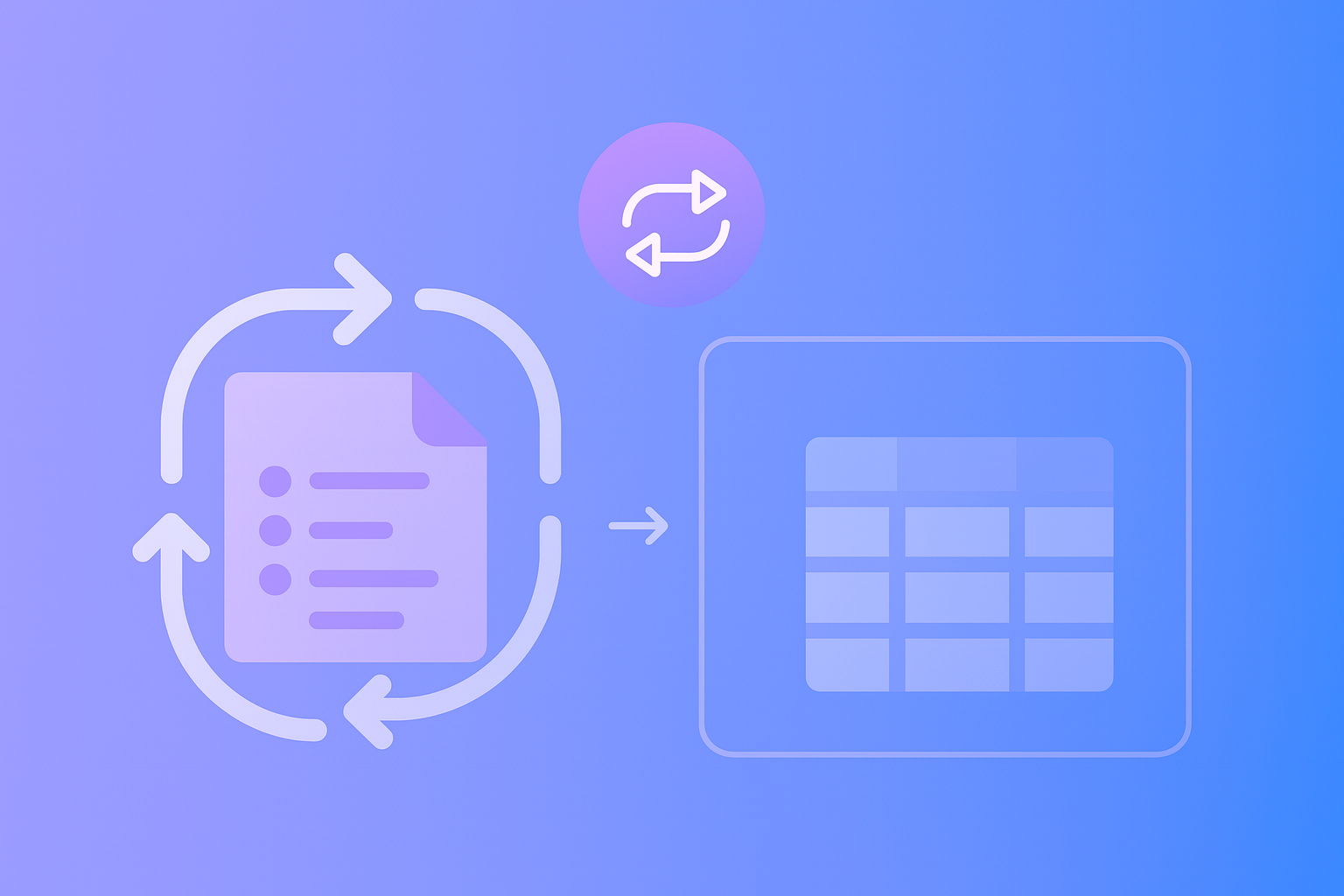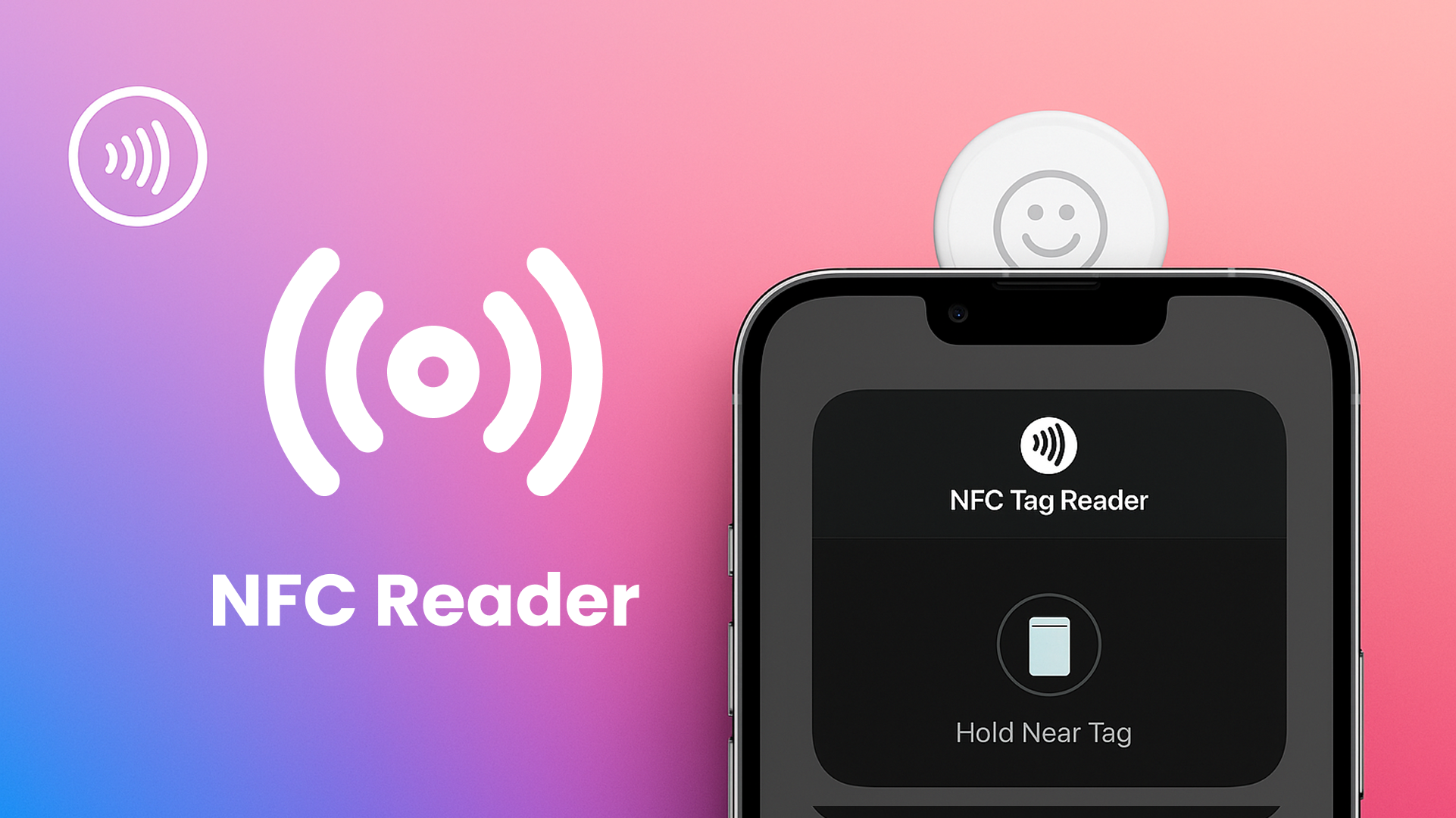From supply chain logistics to retail operations, modern businesses use barcodes, QR codes, and NFC to bridge the physical and digital worlds Yeeflow’s no-code platform now supports all three methods, empowering teams to streamline internal processes and enhance external engagement. But how do you know which technology to use, and when? In this article, we’ll explore Yeeflow’s barcode, QR code, and NFC features – how they work, why they matter, and best practices for using each in scenarios like logistics, retail, and manufacturing.
Understanding Yeeflow’s Scanning and NFC Features
Yeeflow provides built-in support for barcode scanning, QR code generation, and NFC tag reading, making it easy to integrate these capabilities into your custom applications. By leveraging device cameras and sensors, Yeeflow apps can scan barcodes or QR codes and automatically capture their values into form fields or workflow variables. Similarly, Yeeflow’s new NFC Reader Action Step lets you scan Near Field Communication tags with a mobile device to instantly record their data and trigger workflows. These features eliminate manual data entry, reduce errors, and speed up processes. Before diving into specific use cases, let’s break down each technology:
- Barcodes: Traditional one-dimensional barcodes (like Code-128 or EAN-13) encode identifiers with a series of lines. They are ubiquitous in inventory systems and point-of-sale. Yeeflow’s Barcode Control can generate these barcodes in forms or pages by binding to your data (e.g., product IDs or order numbers). On the mobile app side, Yeeflow’s Barcode Scan Action Step uses the camera to read barcodes (or QR codes) and save the result for use in your workflow. This is ideal for quick scans in warehouses, production lines, or deliveries.
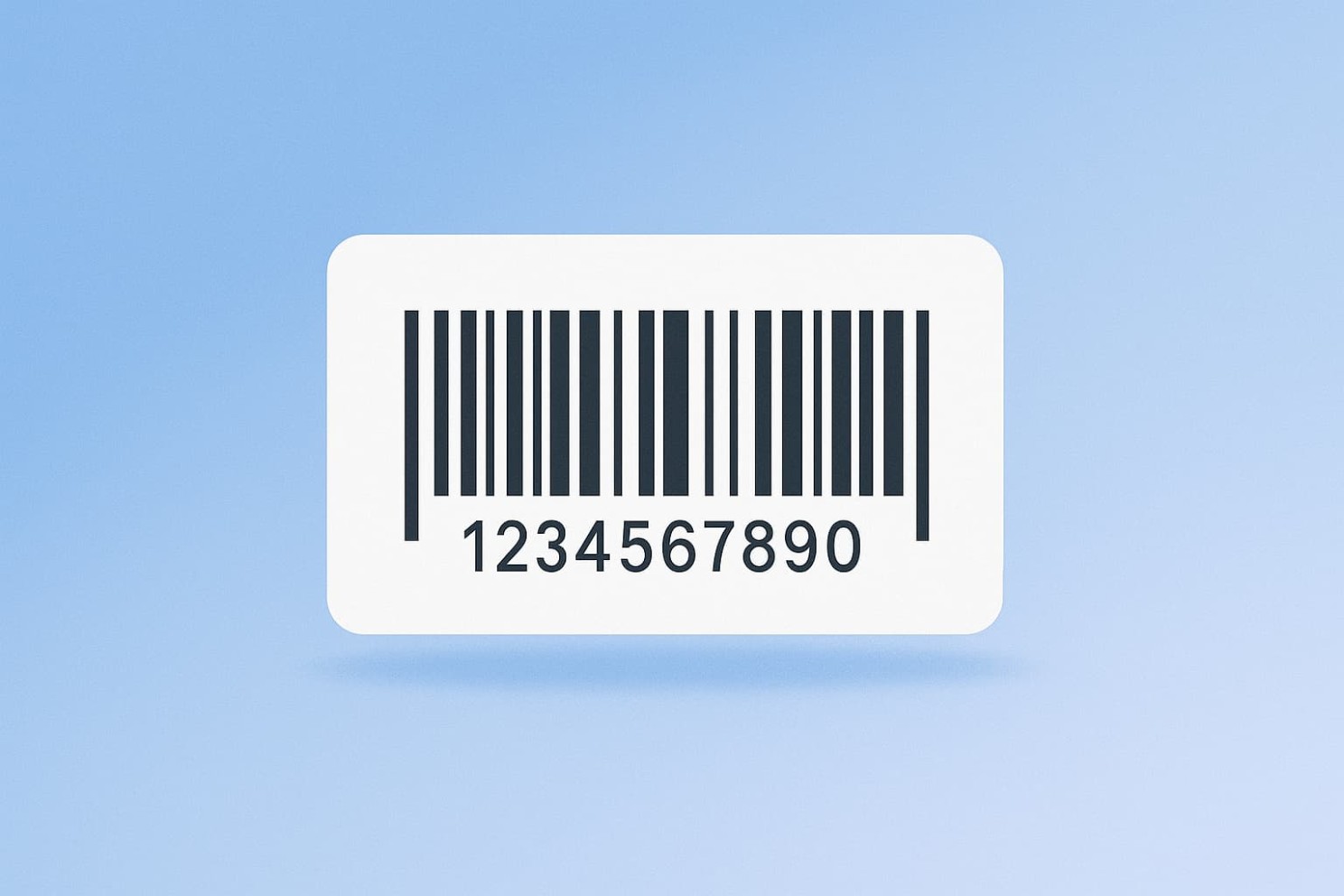
- QR Codes: QR codes are two-dimensional barcodes capable of holding much more data – up to 200 times more characters than a regular 1D barcode. They can encode URLs, text, or other info in a square grid that smartphones easily scan. In Yeeflow, you have a dedicated QR Code Control for embedding scannable codes into your forms or documents. For example, you might add a QR code on a form’s confirmation page that links to that record, or print QR codes on tickets and reports for later verification. QR codes are great for connecting with external users: you can generate a public form link as a QR code so customers or partners can scan and access it instantly. And since Yeeflow’s barcode scanning action supports QR format as well, your app can also scan QR codes (just like barcodes) to look up information or confirm records on the fly.

- NFC (Near Field Communication): NFC enables wireless data exchange over very short distances (a few centimeters). It’s the same tech behind contactless payments and smart key cards. Yeeflow recently introduced the NFC Reader Action Step, allowing your forms to read data from physical NFC tags via a mobile device. When a user taps their phone against an NFC tag, Yeeflow captures the tag’s ID or data into a variable, which you can then use in your workflow logic. Unlike barcodes or QR codes that require line-of-sight scanning, NFC is a tap-and-go experience – extremely fast and convenient for certain tasks. It does require NFC-capable devices and tags, but brings new possibilities for automation (think of it like “touching” an item to record or trigger something).

Now that we have the basics, let's look at how, when, and why to use each of these technologies in practice, and how Yeeflow makes it simple.
Barcodes: Reliable Workhorse for Tracking Assets and Inventory
When to use barcodes: If your scenario involves managing inventories, tracking products, or speeding up data entry in a controlled environment, traditional barcodes are a solid choice. Barcodes are extremely common in logistics and manufacturing – from scanning pallets in a warehouse to tracking parts on an assembly line. They are quick to scan with laser or camera-based scanners and have well-established standards (UPC, EAN, Code-128, etc.) ensuring compatibility with many systems. In retail, 1D barcodes (like the UPC on product packages) remain the standard because of their scanning speed and low printing cost.
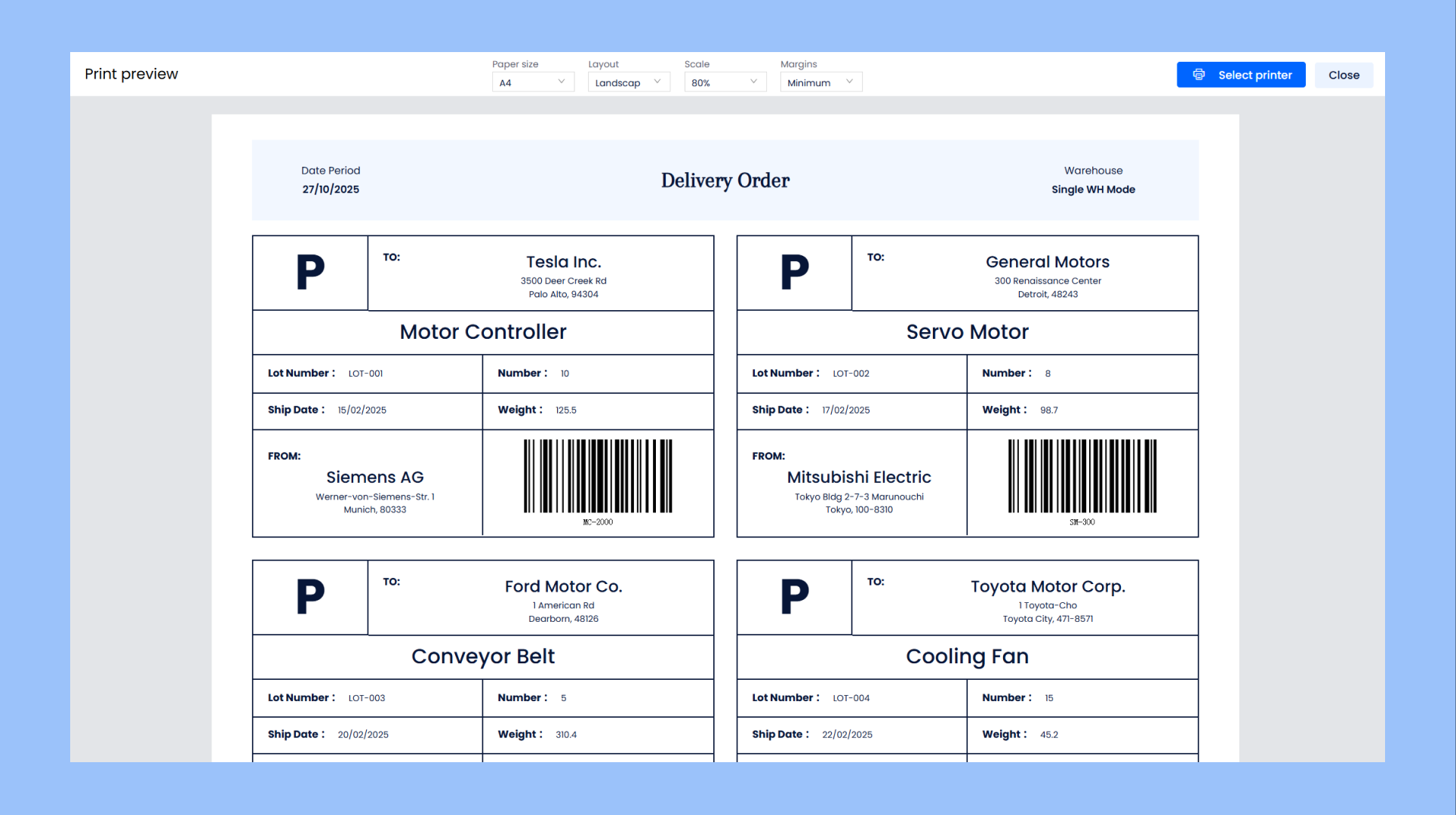
How to use barcodes in Yeeflow: Yeeflow provides two key ways to leverage barcodes: generating them for output, and scanning them as input. On the output side, you can generate barcodes in your Yeeflow forms or pages using the Barcode Control. For instance, an operations manager can design a form where Yeeflow automatically generates a CODE-128 barcode based on the Order ID. This barcode can be printed on the delivery note so that when goods arrive at the warehouse, staff can scan that code to pull up the order details instantly. Yeeflow’s Barcode Control supports many standard formats – you simply bind it to a field or variable (such as an Order ID, Product SKU, etc.) and the system renders the corresponding barcode image. You can even choose to display human-readable text below it or hide the control if the value is empty (useful for optional codes).
On the input side, Yeeflow’s Barcode Scan Action Step allows your form or workflow to capture a barcode via camera. For example, imagine a warehouse receiving process: a worker opens a Yeeflow form on a tablet, clicks a “Scan Package” button, and the app activates the camera to scan the barcode on a package. Yeeflow automatically reads the code (say a purchase order number or product ID) and saves it to a workflow variable. The workflow can then use that value to look up the expected shipment, record the arrival, or trigger the next step in the process. This scanning action is designed for real-world efficiency – it supports auto-detection of various barcode types or you can restrict it to a specific format (for example, only QR, or only EAN-13) to improve accuracy. It even offers a multi-scan mode to capture multiple barcodes in one go (useful during inventory count when you might scan many items back-to-back).
Why barcodes (best practices): Use barcodes when you need a reliable, fast, and low-cost way to tag and scan items. Printing barcodes is inexpensive (just ink on labels) and they can be read by nearly any device with a scanner. In Yeeflow, a barcode-driven workflow can dramatically reduce manual entry – no more typing long IDs. For example, during inventory audits, employees can scan each item’s barcode to automatically record its presence, avoiding transcription errors. In outbound logistics, scanning barcodes on packages before loading a truck helps verify each item and prevents misdeliveries. Barcodes are best in scenarios where the data encoded is an ID or short string that references a database record (since 1D barcodes have limited capacity). Also ensure the environment is suitable: good lighting and clear label placement help scanning. Luckily, Yeeflow’s mobile scanning can autofocus and even let the user tap to select from multiple codes if more than one is visible. In summary, choose barcodes for speed and simplicity in structured internal processes like stock management, where everyone handling the items has a scanning device and you want the fastest scan possible.

QR Codes: Versatile Codes for Engaging Users and Rich Data
When to use QR codes: QR codes shine in scenarios requiring more data in the code or quick interaction with smartphones. Because a QR code can store much more information (e.g. a URL, text, or even a vCard), it’s perfect for connecting physical items to digital content. In retail and marketing, QR codes are ubiquitous for things like product info labels, promotional posters, or contactless menus – customers just point their phone camera at the code to get a web link. In operations, QR codes are useful when you want a single code to represent an item but also encode extra info like an internal URL or compound ID. They’re also 2D, so they can still be read even if partially damaged or printed small . Essentially, use QR codes for broader accessibility – anyone with a smartphone can scan them without special equipment – and when you need a convenient way to lead external users to your digital system.
How to use QR codes in Yeeflow: Yeeflow treats QR codes as a type of barcode but also gives them special attention.
- QR Code Control: This is a ready-made control to drop into any form or page that generates a scannable QR code image. Typically, you’d use this to share links. For example, if you are designing an asset tracking app, you might include a QR code on the asset’s detail page that encodes the direct URL of that record. Then, someone on the floor can scan the printed QR code label on the asset and immediately pull up its info on their device. The QR Code Control in Yeeflow can either embed the current item’s web address or a custom URL you specify. You could even set the URL dynamically (using Yeeflow’s expression editor) to include query parameters or other data. This is great for external forms: Yeeflow allows public forms to be accessed via a direct link or QR code, without login. Many users print that QR code on signage or equipment so that anyone can scan and submit a form (for instance, a maintenance request form QR posted on a machine).
- Barcode/QR generation via Barcode Control: As mentioned earlier, Yeeflow’s general Barcode Control also supports QR as one of the formats. This is useful if you want to generate QR codes based on data. For example, a manufacturing company might generate a QR code that embeds an asset’s serial number or a combination of fields. When printed, that QR can be scanned by any standard reader (or Yeeflow app) to decode the serial number and check it against the database. In one Yeeflow use case, users created voucher QR codes on documents – the system binds a unique voucher ID to a QR code image on a PDF, which customers can later scan to verify or redeem the voucher.
- Scanning QR codes: On the input side, Yeeflow’s scanning action does not differentiate between 1D and 2D codes – Barcode Scan Action Step can handle QR codes just as easily. This means any workflow that asks a user to scan can accept either format by default (or you can set it to “QR only”). In practical terms, if you printed QR codes for your inventory instead of barcodes, Yeeflow will still capture them and output the encoded text to a variable. For example, a field technician could scan a QR code on a piece of equipment; Yeeflow reads it (perhaps it’s a long alphanumeric code) and the app could then show the maintenance history of that equipment. The advantage here is QR codes could encode a URL or a more descriptive ID if needed, which the app can use immediately.
Why QR codes (best practices): Use QR codes for flexibility and external reach. They are best when you want anyone with a phone to be able to scan and interact. For instance, in a retail context you might include QR codes on product shelves that customers scan to get more information or reviews on their phone – a use case barcodes couldn’t serve because customers don’t carry barcode scanners. For internal use, QR codes are handy if you have complex identifiers; since they can encode more data, you might embed not just an ID but also error-checking info or a URL to fetch more data. Keep in mind though: QR codes require a camera to scan, and unlike NFC, they need to be visible and of sufficient size. The upside is they can be scanned from a distance – a well-printed QR code can be captured from several feet away or even across a room if large enough – which can be useful in signage or high-placed labels. Also, cost is essentially zero: you print them like any label. This makes QR ideal for high-volume deployments (labeling thousands of parts or products) because, compared to say NFC tags, you’re not paying per tag. In Yeeflow, a recommended practice is to combine QR codes with mobile forms for external interactions. For example, if you manage field service operations, you could stick a QR code on each equipment. A field agent scans it with the Yeeflow app, which brings up a form pre-filled with that equipment’s ID – they then just input the service details and submit. This reduces friction significantly. Finally, ensure the content behind a QR code is mobile-friendly (if it links to a form or site) and consider using meaningful short links or IDs to avoid extremely dense QR patterns.
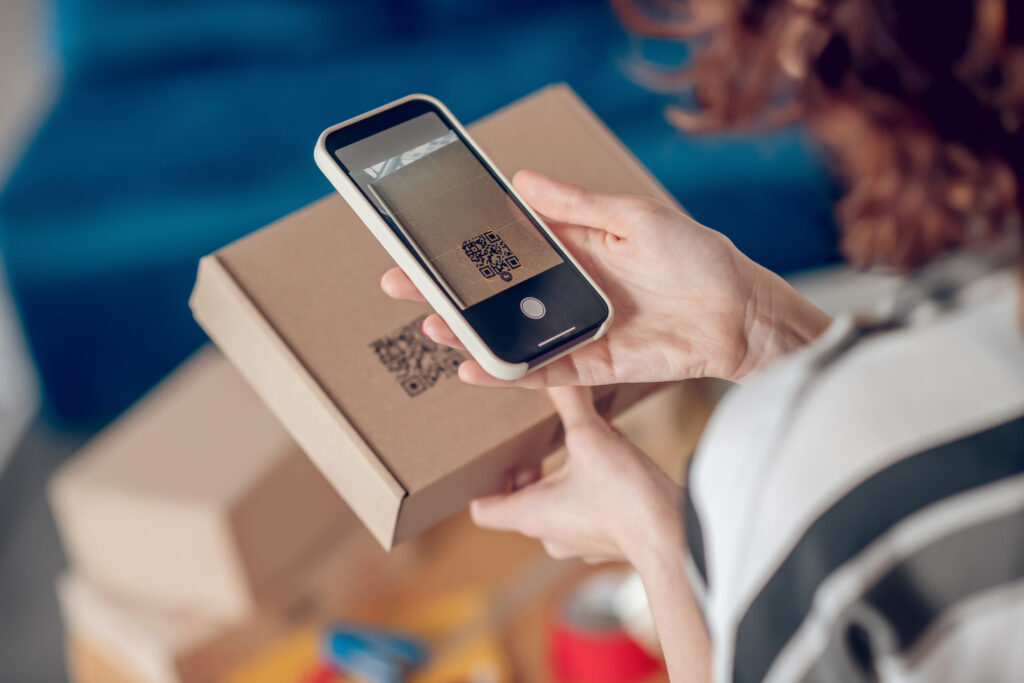
NFC: Tap-and-Go Efficiency for Secure, Real-Time Updates
When to use NFC: NFC is best suited for scenarios where speed and convenience trump broad accessibility, and where you control the environment (since it requires specific hardware). Common use cases are employee or asset identification, access control, and rapid check-ins. In manufacturing or logistics, NFC tags might be embedded in high-value assets, allowing a supervisor to tap them with a phone to instantly identify the item and maybe update its status. In an office or event setting, NFC badges or cards let users check in by a simple tap (e.g., an employee taps their NFC ID card to mark attendance). NFC is also used in retail for contactless payments, but within Yeeflow’s context, it’s more about reading tags to trigger workflows (not payment processing). You should use NFC when you want a quick, almost effortless interaction – literally just bringing a device near a tag – and when you need a bit more security or bidirectional capability than a QR code can provide. NFC tags can also be embedded or hidden in objects (unlike QR which must be visible), so they’re great for long-term durable uses (like inside an equipment casing or an ID card) where a printed code might wear out. Keep in mind NFC’s range is only a few centimeters; this close proximity adds security (harder to skim from afar) but means it’s for on-the-spot interactions, not for scanning something up on a shelf.
How to use NFC in Yeeflow: Yeeflow’s newly added NFC integration makes it straightforward to build “tap” actions into your apps.
- NFC Reader Action Step: In the form designer, you can add an NFC Reader Action Step to a form’s workflow (just like you would add a barcode scan or other action). This action, when triggered (for example by tapping a button in the form), will prompt the user to tap their device to an NFC tag. The moment the tag is read, Yeeflow captures its unique ID or stored data into a variable in your app. From there, what happens next is up to you: typically you’d use that variable to look up a record or validate something. For instance, inventory check-in can be as simple as tapping a tagged product pallet with your phone – Yeeflow reads the tag ID and automatically populates a form with that product’s details (via a Lookup action) and updates stock counts. Another example is employee attendance: employees could each have an NFC card; when they arrive, they open the Yeeflow form and hit “Scan NFC,” then tap their card. Yeeflow records the card’s code, matches it to the employee, and logs the check-in time automatically. All this can happen in seconds, with no typing at all.
- Configuration and tags: In Yeeflow’s NFC action settings, you can specify if you only want certain tag types (Yeeflow defaults to NDEF format, which is the standard for most NFC tags). You just need to ensure your tags are encoded in a supported format (NDEF is common). Most off-the-shelf NFC tags (stickers, cards) will work – they often just hold an ID or URL. Yeeflow doesn’t require the tag to hold a URL; it can just read the raw identifier. Once read, the value is in a variable which you can use exactly as you would a scanned barcode value. The platform also provides error handling settings – e.g., if a read fails or no tag is detected, you can decide to retry, show an error message, or continue the workflow.
- Automated workflows: Because Yeeflow integrates NFC reading into its no-code workflows, you can chain subsequent actions. For example, after a successful tag scan, you might use a Set Variable or Lookup step to retrieve that asset’s data from a Yeeflow Data List and display it to the user. Or use a Set Data List action to update a record (like marking an asset as “checked out” to someone). The key advantage is this happens in real time – tap the tag and something immediately happens in the system, without manual search or form filling.
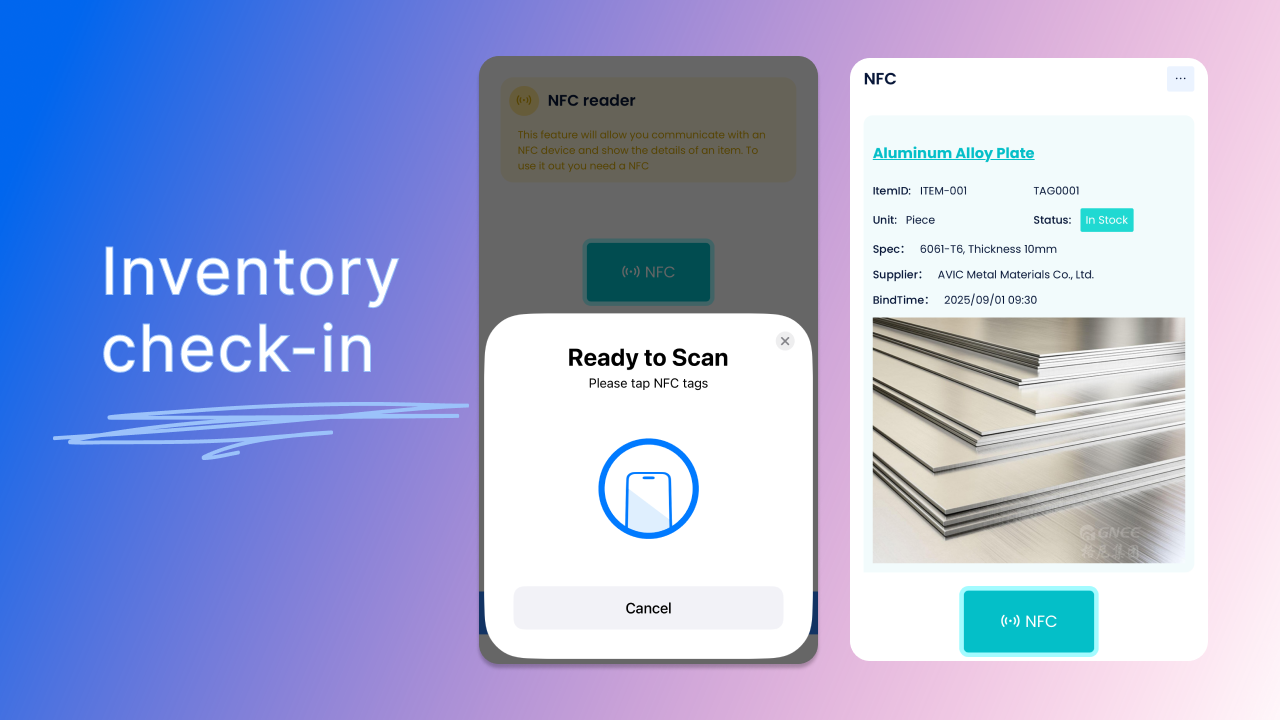
Why NFC (best practices): NFC offers a seamless user experience – it’s fast, requires literally one gesture, and can be more secure/unique (harder to replicate than a printed code). For best results, use NFC in scenarios where that ease-of-use matters: e.g., a busy loading dock where workers are gloved and might prefer tapping a phone to a tag rather than aligning a camera with a QR code; or a secure facility where employees tapping an ID is more appropriate than having a visible QR code that anyone could photograph. Another consideration is device availability: ensure the intended users have NFC-enabled smartphones or tablets. Most modern phones do, but some older or budget devices might not (especially some older iPhones or Androids – though anything from the last 5+ years usually does). Also, you’ll need to purchase NFC tags or cards, which are relatively inexpensive but not free (on the order of 10–20 cents each for basic tags). That cost can add up if you need thousands of them, so you might reserve NFC for cases where reusability or security justifies it (the tags are often rewritable and durable, which can be worth the cost for long-term asset tracking).
In terms of Yeeflow usage, a best practice is to incorporate fallback or alternative flows for users who might not have NFC. For example, you could provide both an NFC tag and a printed QR code on an asset – your Yeeflow app could offer “Scan QR or tap NFC” so whichever method the device supports can be used. This dual approach covers all bases and is something many organizations do when rolling out new tech. Also, make use of Yeeflow’s error handling: if someone tries to scan an NFC tag and it fails (perhaps the tag is damaged), configure the workflow to show a friendly message (and maybe offer a manual input as backup). Finally, test with real tags in your environment. NFC is quite robust, but metal surfaces or interference can sometimes affect reads, so try different placements (there are NFC tags designed for metal if needed). Yeeflow notes that it’s wise to prepare multiple tags during testing to ensure everything works smoothly in various scenarios.
When implemented well, NFC-driven processes in Yeeflow can feel almost magical – tap, and it’s done. As Yeeflow’s team put it, this brings the “power of touch-and-go data capture” into your applications, reducing errors and enabling smarter mobile workflows.
Best Practices: How to Choose the Right Method
Now that we’ve looked at each method individually, how do you decide which one to use in a given scenario? Sometimes the answer may be a combination of them. Here are some guidelines and considerations:
- Use what your environment supports: Evaluate the devices and infrastructure you have. If your warehouse is already equipped with handheld barcode scanners, leveraging barcodes (1D or QR) is a no-brainer – Yeeflow can capture those scans either via its app camera or you might input scanned data as text if the scanner acts like a keyboard. Conversely, if your workforce primarily uses smartphones, QR codes become very attractive for their ease of use (just camera, no extra device needed). If you have NFC-enabled phones and don’t mind provisioning tags, NFC can add speed for repetitive tasks (like rapid check-ins).
- Consider the data and usage frequency: If you simply need to reference an ID to lookup information, a barcode or a QR code containing that ID is sufficient. QR codes come into play when you need to encode more complex info (like a direct link or multiple pieces of data). For example, in a maintenance workflow, a QR code on a machine could encode not just an ID but also a URL to immediately open its service history. If you printed a 1D barcode, it would likely just be an ID, and the app would have to know the URL separately. NFC tags also often just carry an ID (or small data), but their strength is in frequency of use – an employee who has to scan in and out many times a day might prefer a quick tap over lining up a camera each time. For occasional or consumer-facing use (like a one-time scan by a customer), QR is more universally accessible.
- External vs Internal audience: If the scanning is done by external people (customers, clients, the public), you typically lean toward QR codes. They can be printed anywhere and most people know how to scan a QR with their phone camera. For instance, a retail shop might put a QR code on the window for off-hours visitors to scan and shop online – you wouldn’t use NFC for that because you can’t expect everyone to walk up and tap (and some phones might not have NFC enabled for such use). Barcodes are rarely used for customer-facing interactions (customers don’t usually scan UPC codes with their camera, though it’s possible). So, QR is king for customer engagement. On the other hand, internal operations can benefit from NFC and barcodes because you have control over the tools and can train staff. An operations manager might decide that in the production floor, they’ll use NFC badges for machine inspections (fast and hands-free), whereas in the finished goods warehouse, they’ll use barcodes on boxes (cheap and scannable from a distance).
- Security and accuracy: NFC has an edge in security – you cannot intercept it from afar and tags can even be locked or encrypted. If you’re dealing with sensitive or critical data (e.g. tracking pharmaceuticals or expensive equipment), NFC tags might provide more assurance that the scan is deliberate and not easily spoofed. QR codes can be photographed by anyone, so you wouldn’t use a QR code as an access token unless it’s meant to be public. Barcodes printed on assets could potentially be mis-scanned or copied as well, but if that’s a concern, you can mitigate by including check digits or using QR with encryption. For identity verification, NFC is often used (for example, many employee ID cards or passports have NFC chips). Yeeflow could read an NFC badge ID to confirm someone’s identity in a workflow – a safer approach than say a printed code that anyone could copy. That said, a simpler approach if high security isn’t needed is just to use a barcode/QR on an ID card and scan it; it really depends on your security requirements.
- Speed and volume: For high-volume, rapid-fire scanning (like scanning 100 items in a row), a 1D barcode with a traditional scanner might still be the fastest option – laser scanners are extremely quick and can handle poor lighting. Yeeflow’s camera-based scanning is quite capable (and offers a multi-scan mode), but if you had to scan a conveyor belt of items, you’d rely on specialized barcode systems. In contrast, NFC scanning is one-at-a-time (you can only tap one tag at a time per device) and is very fast for that one action, but you can’t do “bulk” reads simultaneously. If bulk speed is crucial, you might also consider if RFID (a cousin of NFC) is more appropriate since it can scan multiple tags at once without line-of-sight – though note Yeeflow’s feature is specifically NFC, not long-range RFID. For most typical operations though, scanning items one by one with either QR or NFC via Yeeflow will hugely improve efficiency over manual entry. Just pick the method that aligns with how the user will physically interact with the item (point the camera vs. tap the device).
- Cost and implementation effort: As mentioned, printing barcodes and QR codes is virtually free aside from paper/ink. NFC tags cost a bit – on the order of 10–20 cents each – and you have to program them (even if just writing an ID). If you have thousands of assets to tag and a tight budget, QR codes might be more economical. However, if those assets already have serial number labels (barcodes), you could simply use those with Yeeflow’s scanner – no need to add QR on top unless you need the extra data. Often, companies might start with barcodes (since they might already exist on products or packages) and then introduce QR codes for new interactive use cases, and selectively deploy NFC for high-value or high-frequency use cases. Yeeflow supports all three in parallel, so you aren’t locked into one. You could have an app where an internal user interface has a “Scan” button that offers two choices: “Scan Barcode/QR” or “Scan NFC”, catering to whatever tag is present. This kind of flexibility means you can pilot one approach and add another later.
In short, match the tool to the job: Barcodes for tried-and-true inventory and rapid scans, QR codes for versatility and reach, NFC for effortless taps and enhanced security. Many businesses find a mix is the best solution – for example, using QR codes on customer-facing labels, but NFC for internal staff workflows, as each plays to its strengths.
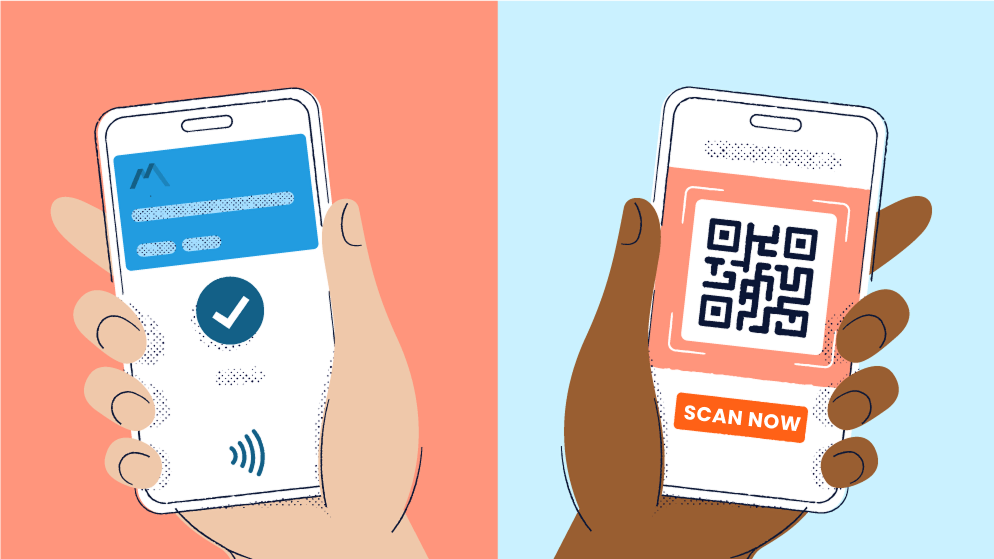
Conclusion: Bridging Physical and Digital with Yeeflow
Barcode, QR code, and NFC technologies each offer a pathway to connect physical items or actions with digital systems. Yeeflow’s integration of these features means you can implement enterprise-grade tracking and automation without writing a single line of code – all within one platform. Business analysts and operations managers can design flows where scanning a code or tapping a tag triggers real-time updates, notifications, or data lookups, significantly accelerating business processes and reducing errors. CIOs and IT leaders will appreciate that this happens securely and in a controlled manner: all data captured goes straight into your Yeeflow application, where you can enforce validation, logging, and further automation.
In practice, we’ve seen that deploying these technologies can transform operations. A logistics team can maintain end-to-end visibility of shipments by scanning barcodes at each stage, updating a Yeeflow dashboard in real time. A retail business can blend online and offline customer experiences – for example, a customer scans a QR code on a product to get an online demo or coupon, while in-store staff use the same app to scan inventory QR codes for stock management. A manufacturing plant can improve safety and compliance by requiring workers to tap their NFC badge at each checkpoint or before using certain machinery, ensuring only authorized personnel proceed (and creating an audit trail). The possibilities are broad, and because Yeeflow is a no-code platform, these ideas can be tested and implemented quickly by the people who understand the business needs best.
To get started, identify a simple use case in your organization: maybe replace a paper sign-in sheet with an NFC tap, or add a QR code to a form that field agents can scan for instant access. Yeeflow provides the building blocks – Barcode Controls, QR Code Controls, scanning and NFC Reader Action Steps – ready to drag and drop into your app design. As you implement these, keep the end-user in mind and follow the best practices we discussed (e.g. provide instructions like “Point your camera at the QR code” or “Tap your phone on the tag,” and have fallbacks for errors). With a thoughtful approach, you’ll leverage the strengths of each method.
In conclusion, barcodes, QR codes, and NFC are not mutually exclusive but complementary tools. By understanding how, when, and why to use each, you can greatly enhance efficiency and interactivity in your internal and external business processes. Yeeflow’s support for all three means you have a comprehensive toolkit at your disposal. So whether it’s scanning inventory in a warehouse, engaging customers via smartphone, or enabling one-tap inspections on the factory floor – you can build it in Yeeflow. Embrace these technologies and take your operations to the next level, one scan (or tap) at a time.

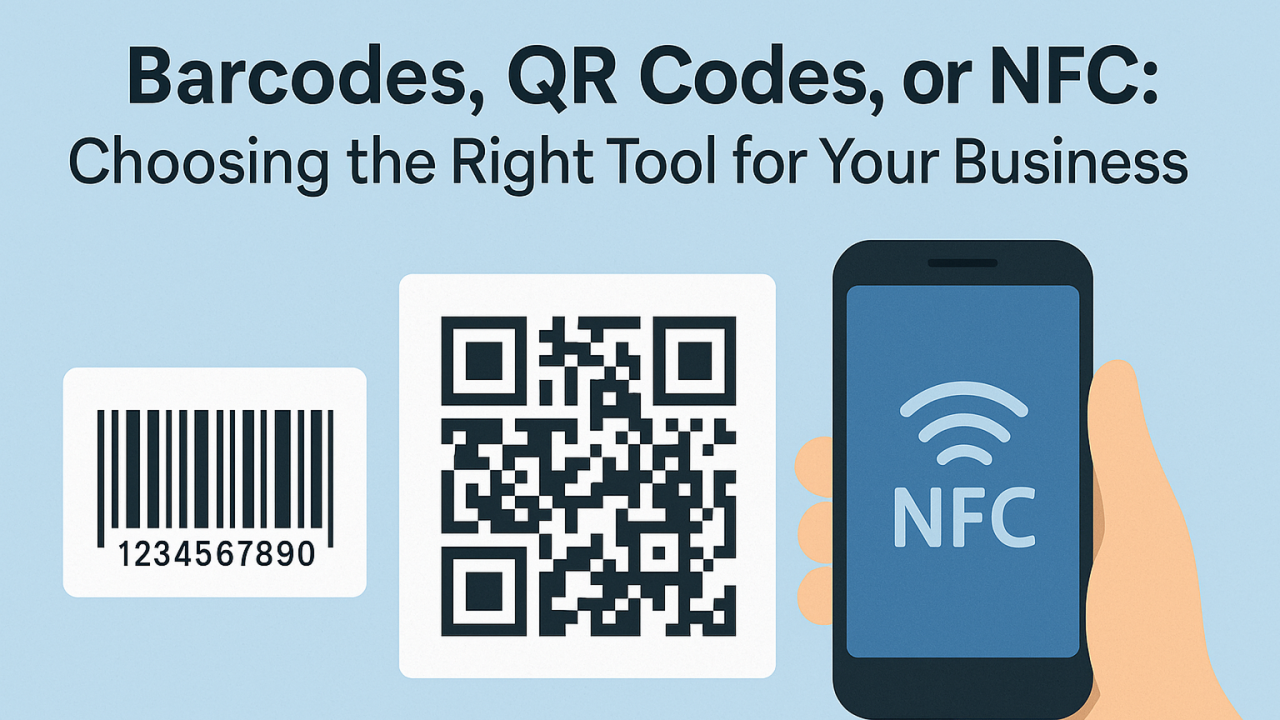

.png)
